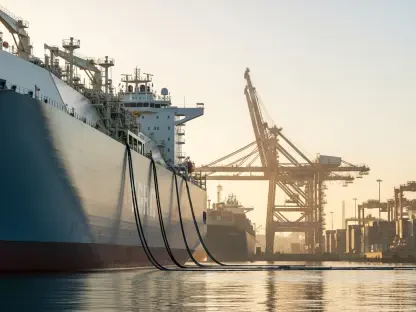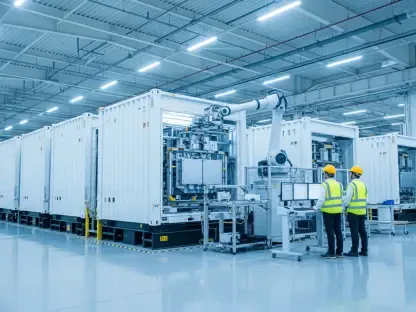The U.S. LNG sector has transformed in recent years, marking the nation’s transition from a net importer to a global export leader. At over 91.3 million tonnes per annum, the U.S. boasts the world’s largest LNG export capacity. Plans to triple this capacity by the decade’s end emphasize this ambition. However, journeying this path is fraught with economic challenges, notably tariffs affecting construction costs at new and existing facilities. Understanding these dynamics offers significant insights into the prospects of the U.S. LNG market amidst international trade complexities and evolving financial landscapes.
Current Market Landscape and Expansion Aspirations
The LNG market expansion has accelerated due to supportive policies during previous administrations that emphasized energy exports as a cornerstone. Under leadership, measures such as lifting freezes on export permits significantly influenced the market. Companies have harnessed this favorable climate, embarking on projects that aim to augment current capacities. Venture Global’s CP2 project and Cheniere Energy’s expansion initiatives are testaments to this strategic endeavor. Such efforts are pivotal for maintaining and potentially expanding the U.S. leadership role in global LNG markets.
Trade Tariffs and Their Impact on Construction Costs
In the heart of this ambitious expansion lie trade tariffs on essential materials like steel and aluminum. These tariffs pose significant challenges, inflating construction costs and potentially leading to higher LNG export prices. This situation introduces financial hurdles and may cause shifting preferences among global consumers seeking competitive pricing. Companies such as Venture Global and Cheniere Energy are navigating these complexities, adapting their strategies to minimize tariff impacts while continuing project development. Understanding these dynamics is crucial for forecasting the industry’s adaptability to trade barriers.
Investment Patterns and Market Realities
Navigating the economic milieu requires a balancing act between significant investment and market assurances. Companies exhibit varied approaches; while Cheniere Energy emphasizes securing demand through long-term contracts before investments, Woodside presents a contrasting model with less rigid sales agreements. These differing strategies reflect broader industry trends, suggesting a shift in financing models. Such insights illustrate how market realities influence investment decisions and project development timelines, providing a nuanced perspective on the evolving LNG landscape.
Regional Challenges and Collaborative Innovations
Expansion efforts within the U.S. also contend with regional complexities. Developing new sites versus expanding existing infrastructure poses distinct challenges, often necessitating innovative solutions. Partnerships such as potential collaborations between Woodside and Saudi Aramco hint at evolving investment models that redefine traditional financing practices. By analyzing these collaborations and regional dynamics, a deeper understanding emerges, correcting misconceptions regarding uniformity in LNG expansion strategies.
Evaluating Future Trends and Innovations
The LNG sector faces several trends likely to shape its future path, from technological advancements to potential shifts in regulatory frameworks. Continued growth hinges on strategic foresight and innovative approaches to meet anticipated challenges. As economic conditions evolve, these factors will redefine the market landscape, maintaining U.S. leadership. Exploring speculative insights unveils how these elements might influence global LNG dynamics, fostering a strategic view of industry evolution.
Strategic Insights for Stakeholders
In light of the market analysis, stakeholders must consider agility in response to regulatory shifts, innovation in financing, and diversification of export markets. The capacity to adapt to industry trends and investment patterns will be paramount. Professionals and businesses must leverage this strategic foresight to transform trade challenges into opportunities, thus enabling a thriving U.S. LNG expansion. This approach fosters resilience in navigating complex and demanding market landscapes.
Reflecting on the Market Trajectory
In retrospect, the narrative of U.S. LNG expansion embodied a blend of ambition and strategic adaptation amidst external challenges. The U.S. positioned itself as a formidable presence in the global LNG market, with potential capacity growth reflecting industry aspirations. While facing considerable adversities, the market demonstrated adaptability and innovation. These insights underscore the significance of strategic positioning within the LNG sector, offering guidance for future stakeholder actions and decisions as the industry evolves.









